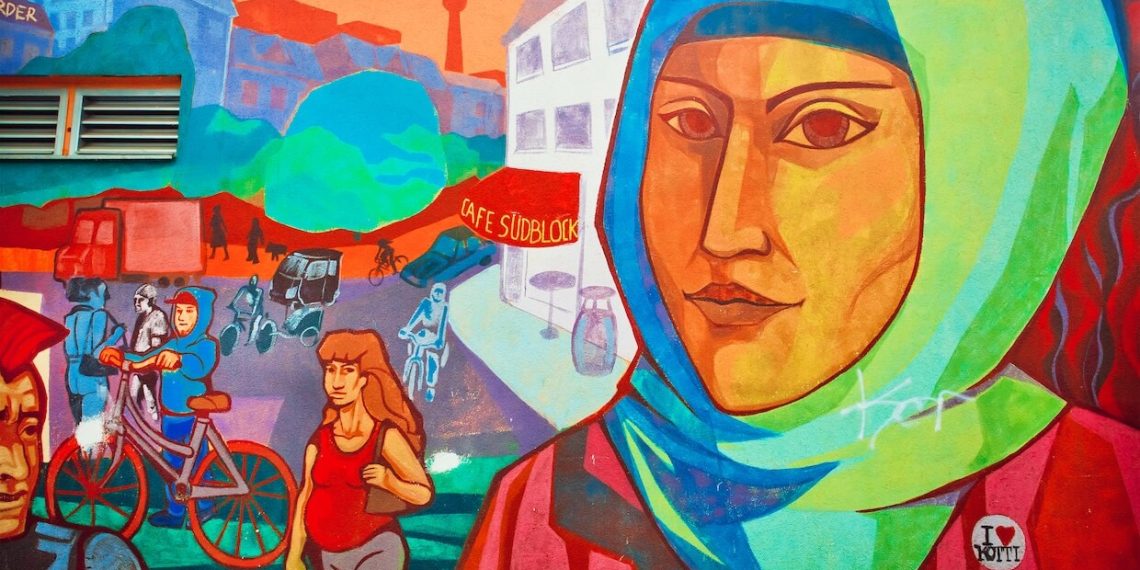Abstract
How do voters evaluate female Muslim politicians? The literature mainly approaches voter evaluations of underrepresented groups from a unitary perspective, focusing on either female or minoritized politicians, leaving Muslim politicians out of the picture altogether. I take an intersectional approach and consider a finding intersectional when evaluations of a Muslim woman politician are significantly different from both non-religious women and Muslim men. I test this by running survey experiments amongst 3056 respondents in France, Germany, and the Netherlands and presenting 18,336 randomly constructed profiles of hypothetical politicians varying their religion, gender, and migration background. Voters have a strong negative bias against Muslim politicians. However, voters do not assess female Muslim politicians significantly differently than their male counterparts. These conclusions have implications for researchers studying intersectionality using conjoint experiments and researchers concerned with the electoral consequences of diversity in a political landscape increasingly influenced by populist radical right parties.
Keywords: Intersectionality, Muslims, Islamophobia, Muslim women, Descriptive representation
Please find all replication materials here: https://doi.org/10.17605/OSF.IO/JZYR7
By Sanne van Oosten
Introduction
There are many examples of female Muslim politicians being targeted by politicians of the Populist Radical Right (see Farris, 2017; Oudenampsen, 2016), sometimes leading to female Muslim politicians receiving extraordinary amounts of discursive backlash (Saris & Ven, 2021; van Oosten, 2022). At the same time, Muslim women tend to outnumber Muslim men in politics (Hughes, 2016), especially in contexts where party selectors craft candidate lists: Muslim women tick two diversity boxes while also challenging stereotypes of Muslim women as oppressed, simply by being politicians (Dancygier, 2017). Despite these challenges and the unique positioning of Muslim women in politics, the question remains how voters evaluate them. Does being a female Muslim politician pose electoral challenges, or is there an electoral benefit? In this paper, I test whether intersectionality plays a role in how voters evaluate female Muslim politicians.
An intersectional analysis is distinct from a unitary or multiple one (Hancock, 2007). Where a unitary analysis foregrounds one background characteristic (race or gender) and a multiple analysis adds up the effects of multiple ones (race and gender), an intersectional analysis highlights the interaction between them (race interacts with gender) (idem). In order to study the intersectional position of minoritized women in politics quantitatively, many scholars call the use of interaction effects and candidate experiments viable methodological solutions (Block et al., 2023; Klar & Schmitt, 2021, p. 493, 495). This paper tests the limits of both the method of data collection (candidate experiments) and the method of analysis (interaction effects) by studying what is arguably a most-likely case: female Muslim politicians.
Though there has been much research on intersectionality and politicians in the US (Brown, 2014a, 2014b; Collins, 1998; Holman & Schneider, 2018; Lemi & Brown, 2019; Reingold et al., 2020), intersectionality and politicians in the European context is poorly understood. In Europe, Muslim women play a crucial role in many nationalist debates in western countries such as France, Germany and the Netherlands (Dancygier, 2017; Korteweg & Yurdakul, 2021). The general framing tends to imply that Muslim women are significantly different from both non-Muslim women and Muslim men because being Muslim influences what it means to be a woman and being a woman influences what it means to be Muslim. As Islam and gender are thus “mutually reinforcing”, an intersectional lens is indispensable (Crenshaw, 1991, p. 1283). This is particularly apparent when female Muslim politicians attempt to enter politics (Dancygier, 2014; Hughes, 2016; Murray, 2016). However, whether female Muslim politicians face a “double disadvantage” or a “strategic advantage” (Gershon & Lavariega Monforti, 2021) depends heavily on the specific political and societal context in which they operate. In order to study this, I presented 3056 respondents in France, Germany, and the Netherlands a total of 18,336 short bios of hypothetical politicians while randomizing their religion, ethnorace and gender. I asked respondents to assess these politicians by asking evaluation and choice-questions. Candidate conjoint experiments rarely include Islam as an experimental condition and when they do, intersectional analyses are rarely conducted (one notable exception being Benstead et al., 2015).
In line with Hancock (2007), I analyze the results in a unitary, multiple and intersectional way. In the intersectional analysis I use interactions while controlling for direct (unitary) effects. Although I do not find voters assess women and ethnoracially minoritized politicians negatively, I find robust and consistent evidence that voters have a strong negative and unitary bias against Muslim politicians. However, this analysis did not garner any evidence for intersectional effects of religion and gender. Given the sizable sample and effect sizes, I do not consider a lack of statistical power the cause of these null results. Though I remain confident that interaction effects are the most fitting method of analysis, I argue that conjoint experiments are not the most fitting method of data collection due to the cognitive overload causing respondents to single out one attribute to base their choices on.


